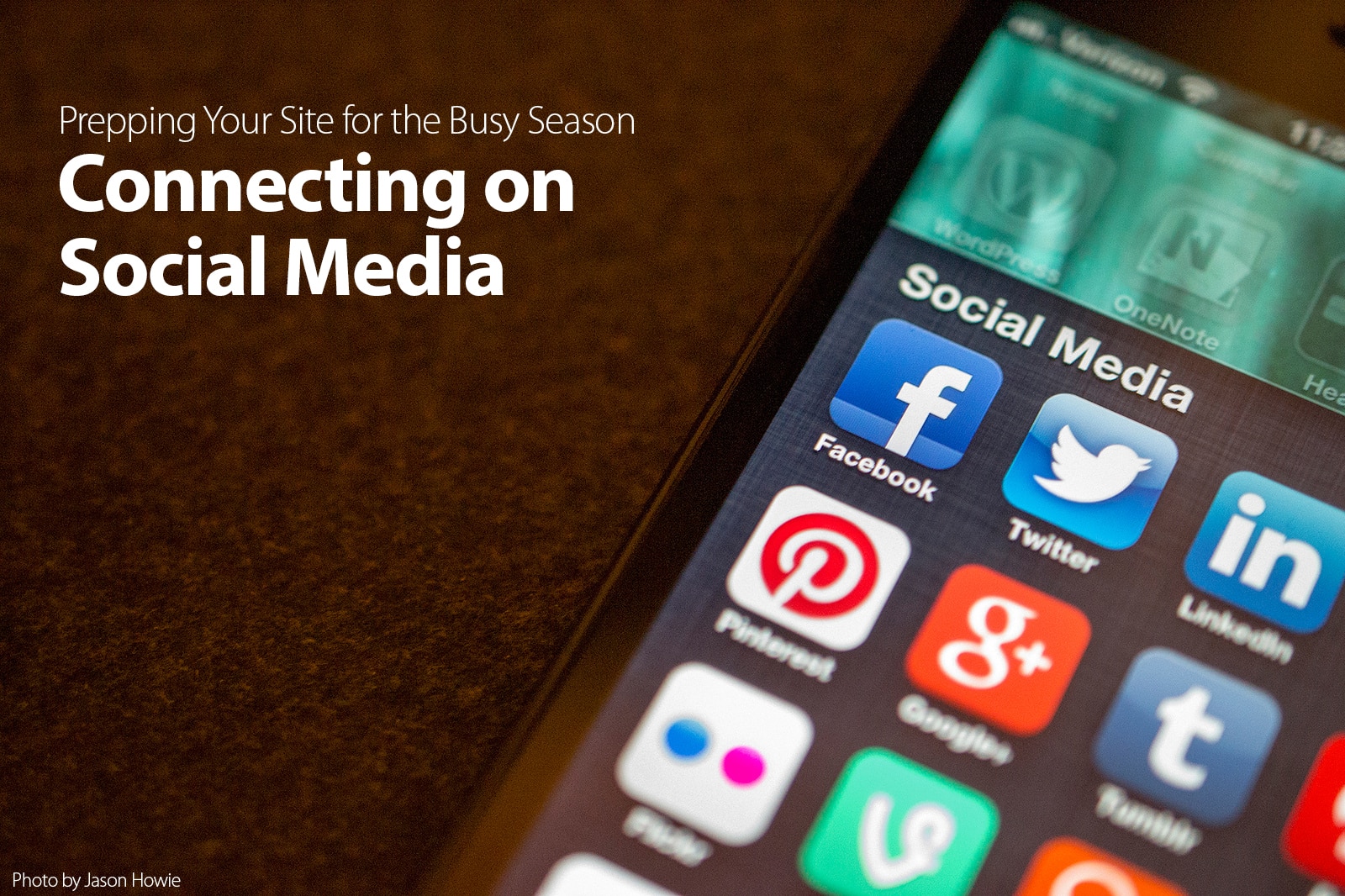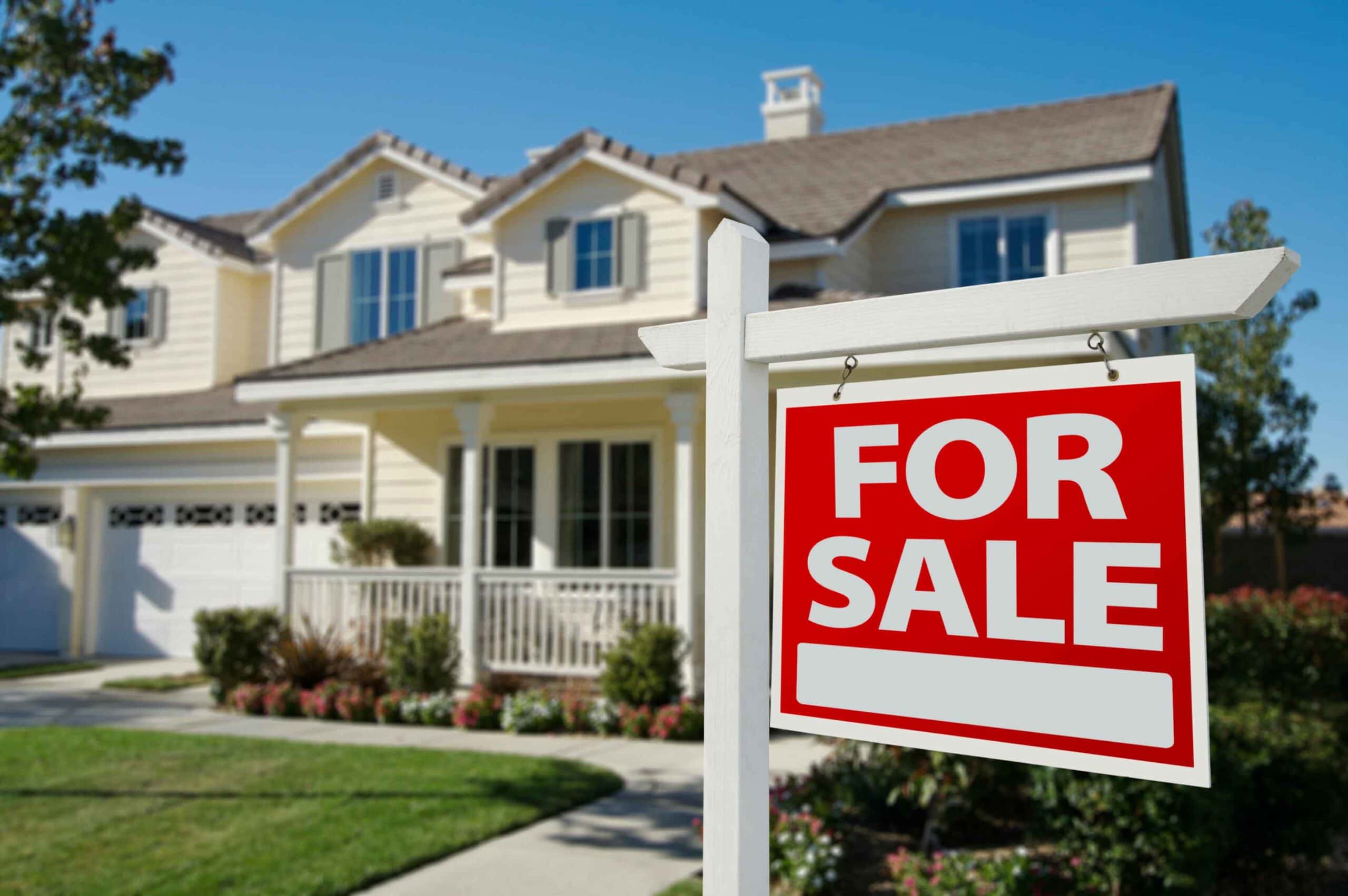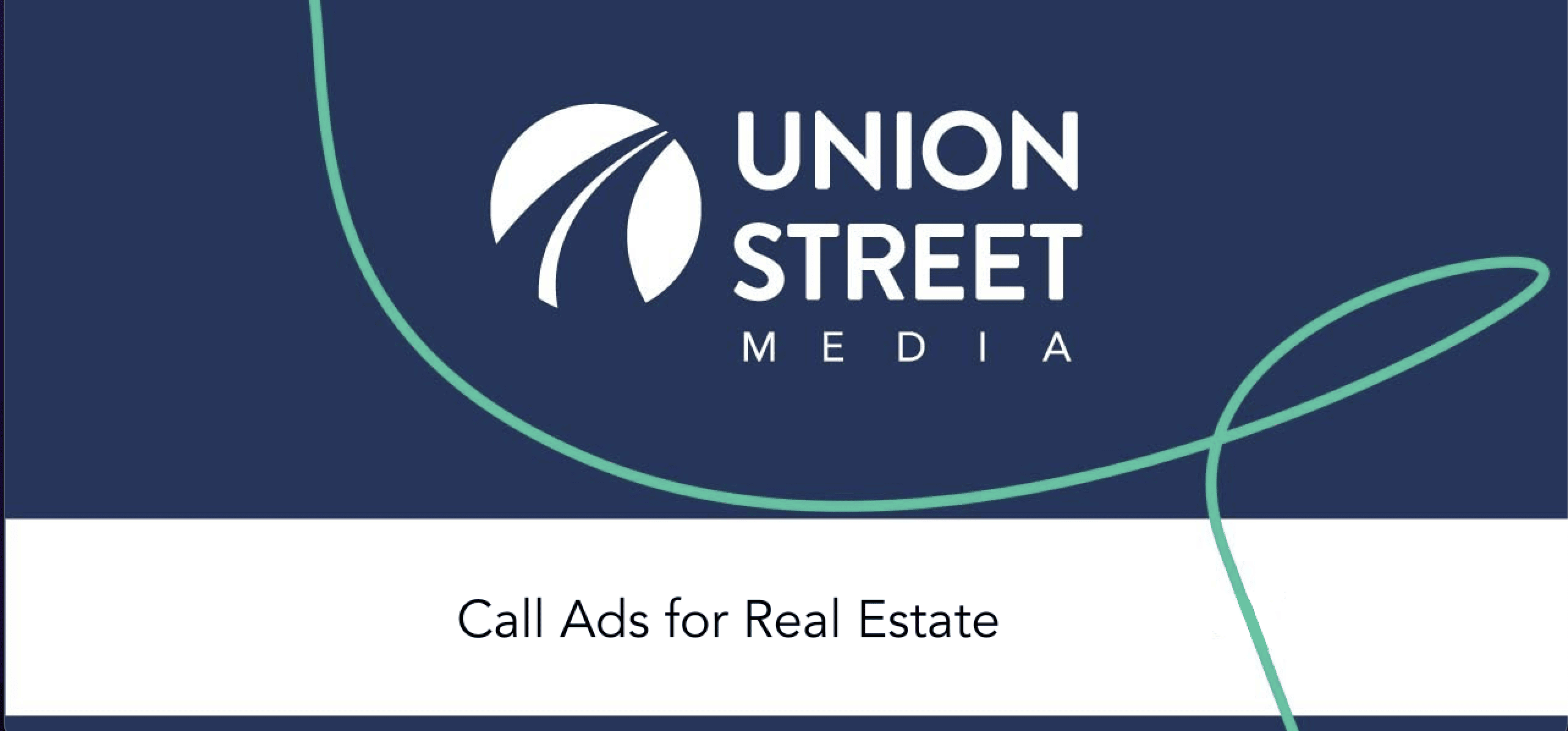Prepping Your Website for the Busy Season, Part 3: Connecting on Social Media
[This article is the third post of our four-part series on how to prep your website for the busy season. Look for the following posts over the next few weeks to make sure that your website is ready for the rush.] We’ve already talked about market research for the real estate busy season and how to capture the influx of buyers and sellers online. Now, we’ll talk about something even more important: how to connect with those buyers and sellers on social media.
The Basics
 We did a breakdown of the main social media marketing sites in a previous blog post, but I think it’s worth it to rehash and expand their definitions (since social media is constantly changing). You may also find that our post, “How to Create a Vision for Your Social Media Presence,” will help you decide which social media networks to use for your business.
We did a breakdown of the main social media marketing sites in a previous blog post, but I think it’s worth it to rehash and expand their definitions (since social media is constantly changing). You may also find that our post, “How to Create a Vision for Your Social Media Presence,” will help you decide which social media networks to use for your business.
Facebook is an online social networking site that allows its users to create personal profiles, add other users as “friends,” and interact with other users through personal messages and public wall posts. People can also post status updates and photos directly to their profile. Facebook is a great place to start for real estate agents who want to increase their online presence since it offers targeted ad strategies and an intuitive analytics dashboard for business pages. Facebook also offers access to a huge audience (the company has 1.28 billion users). Approximately 65% of its users are age 35 older.
Twitter is a platform that allows its users to interact with 140-character posts called “tweets.” It’s often referred to as the “SMS of the Internet” and has roughly 255 million users. The site handles millions of tweets and almost two billion search queries per day. Twitter allows businesses to purchase ad space with promoted tweets and lead generation cards, as well as a free analytics dashboard at analytics.twitter.com. Twitter was ranked as one of the 10 most-visited websites of 2013.
Google+
Google+ is a social media site created by Google. The interesting aspect of Google+ is that it not only functions as a networking site; content posted on your Google+ account can be associated with your site and enhance your authority in search engine rankings. The site has approximately 540 million users, making it the second-largest social media site behind Facebook.
LinkedIn is a social networking service specifically designed around professional networking. Therefore, it offers a unique advantage for real estate agents who want to network with other Realtors and boost their industry knowledge. LinkedIn allows both personal and company pages to create profiles on the site and interact with other users. People can build online groups and forums with LinkedIn to discuss industry news; real estate agents often join discussion groups to stay updated on local and national market trends. The site has approximately 300 million users.
YouTube
YouTube is a video-sharing social media site owned by Google. Users can create accounts on the site to upload, view, and share videos. People can also comment on videos and interact with other users on comment threads. The site offers a real advantage to real estate agents who want to promote video blogs or clips of house tours.
Instagram is a social networking site where people can upload, share, and comment on short videos and photos. The site allows users to apply digital filters to their pictures and share those photos across other sites like Facebook and Twitter. Real estate companies could see some benefit from this site by posting photos of new listings and local attractions. Instagram offers access to a younger demographic – especially the sought-after market of millennials; 90% of its 150 million users are under the age of 35.
Pinterest is a social media site based on the idea of discovery. Users can create collections – also known “boards” – of “pins” that detail everything from DIY projects to dinner recipes. The site has about 70 million users and analysts speculate that ads on the site could generate up to $500 million in 2016. Real estate agents who use Pinterest often create boards for new listings, DIY advice, and local attractions. Buyers are more likely to use this social media site when looking for a new house, and they will likely curate boards of listings in their desired location.
Understanding Your Social Audience
 If you want to connect with more buyers and sellers in the busy season, then you need to understand your social audience. 56% of all Americans have a profile on a social networking site, and 22% of Americans use social media many times a day. Those numbers are growing. While more and more people are going online, they are becoming harder and harder to reach. When you understand your social audience, you have a better chance of grabbing their attention. First, you have to identify your social audience. Who are they? How old are they? What do they want in a house? How well do they understand the local market? Take the time to sit down and think deeply about these questions. Jot down some notes to jog your memory later on down the road. Second, do your research about their social media habits. Figure out where your social audience exists online. As we noted above, millennials are more likely to use sites like Instagram and Twitter. Older audiences tend to use Facebook more regularly. Focus your social media efforts on the sites where most of your social audience lives online. Last, map your social media content to your social audience’s buying journey. Buyers go through these steps before they do business with your company: awareness, knowledge, liking, buying. Buyers first develop an awareness of your company after a Google search or a referral from an acquaintance. At this point, they might not be quite ready to buy, but they’re open to the idea that they may need your services in the future. At the next step, the buyer is thinking about buying a property and will go online to conduct research about local agents and brands until they find the company that they like the most. Then, they decide to buy. Make sure to create social media content for each step: fun pictures and blog posts about company culture, case studies and testimonials from previous clients, and advice for both buyers and sellers. When you map your content to the buying experience, you’re more likely to connect with a new audience of buyers and sellers on social media.
If you want to connect with more buyers and sellers in the busy season, then you need to understand your social audience. 56% of all Americans have a profile on a social networking site, and 22% of Americans use social media many times a day. Those numbers are growing. While more and more people are going online, they are becoming harder and harder to reach. When you understand your social audience, you have a better chance of grabbing their attention. First, you have to identify your social audience. Who are they? How old are they? What do they want in a house? How well do they understand the local market? Take the time to sit down and think deeply about these questions. Jot down some notes to jog your memory later on down the road. Second, do your research about their social media habits. Figure out where your social audience exists online. As we noted above, millennials are more likely to use sites like Instagram and Twitter. Older audiences tend to use Facebook more regularly. Focus your social media efforts on the sites where most of your social audience lives online. Last, map your social media content to your social audience’s buying journey. Buyers go through these steps before they do business with your company: awareness, knowledge, liking, buying. Buyers first develop an awareness of your company after a Google search or a referral from an acquaintance. At this point, they might not be quite ready to buy, but they’re open to the idea that they may need your services in the future. At the next step, the buyer is thinking about buying a property and will go online to conduct research about local agents and brands until they find the company that they like the most. Then, they decide to buy. Make sure to create social media content for each step: fun pictures and blog posts about company culture, case studies and testimonials from previous clients, and advice for both buyers and sellers. When you map your content to the buying experience, you’re more likely to connect with a new audience of buyers and sellers on social media.
Connecting on Social Media
Once you understand the wants and needs of your social audience, the next step is to reach out and start talking. We have other posts that teach you the basics of interacting with clients online, so we’ll offer little-known tips and tricks to increase engagement on top of those basic building blocks:
1) Create Social Media Landing Pages for Your Site
Targeted content is the key to converting site visitors and leads. Why not target the people who happen upon your site through social media? Instead of sending your social media followers to your homepage, consider sending them to a personalized landing page that acknowledges where they came from and features other engaging content on your site. Let’s say you have a Twitter follower who lands on a Twitter landing page. The copy for this landing page could read something like:
“Hi, there! Thanks for checking out our Twitter account. Here at [your company], we believe that social media has the power to transform real estate. Here are some of our favorite blog posts on how to use Twitter to buy or sell a home.”
2) Use Social Media Ads
Most social media sites allow small businesses to promote posts or display ads to a targeted audience for a small fee. On Facebook, you can boost posts for as little as $5 and target an audience based on age, gender, and location. Facebook even offers retargeting tools that allow you to advertise only to people who visit your site. Pinterest also allows you to promote pins to all of your followers.
On Twitter, you can promote tweets or create free lead generation cards that encourage users to sign up for small offers in exchange for their email address. Email addresses can often be a good source of leads for real estate agents. For instance, a real estate agent could create a lead generation card based on an ebook that they created: “The Real Estate Guide to DIYs.” Content for the lead generation card could read:
“Click this link to request a free DIY ebook from [your company]: [insert link]. We’ll email it to you for free.”
Below the copy, Twitter autofills the user’s email address so all they have to do is click “Send Me the Ebook.” They get the content you created, and you get a new lead in the form of an email address.
3) Create Video Content
People absorb visual information better than simple text. In fact, some people would rather search for information through YouTube or Google Images. Websites that contain visual elements like images or video almost always outperform text-only websites in search engines. Consider creating a video in response to FAQs from your clients or local event in your area. Remember to end your videos with a call to action that encourages your viewers to subscribe to your channel. Promote these videos across all of your social media pages to get more views.
4) Measure, Optimize, Repeat
Almost all social media sites offer an analytics dashboard for companies to measure the success of their posts, tweets, and pins. Once you create an account on a social media site, monitor the engagement on each of your posts to see what content resonates best with your social audience. Once you determine the characteristics of your best content, replicate it in future posts to connect with your audience and drive engagement.
5) Promote Your Social Media Pages Whenever, Wherever
Promote your social media pages as often as you can. Have a business card? Put your Twitter handle on it. End your email signature with a link to your Facebook page. Promote your YouTube channel on your Pinterest page and vice versa.
Be sure to check out our final post of the series: “Managing Your New Leads.” Got another tip for how to connect with people on social media? I’d love to hear your thoughts.










1 thought on “Prepping Your Website for the Busy Season, Part 3: Connecting on Social Media”
Amazing things to share….keep it coming please!